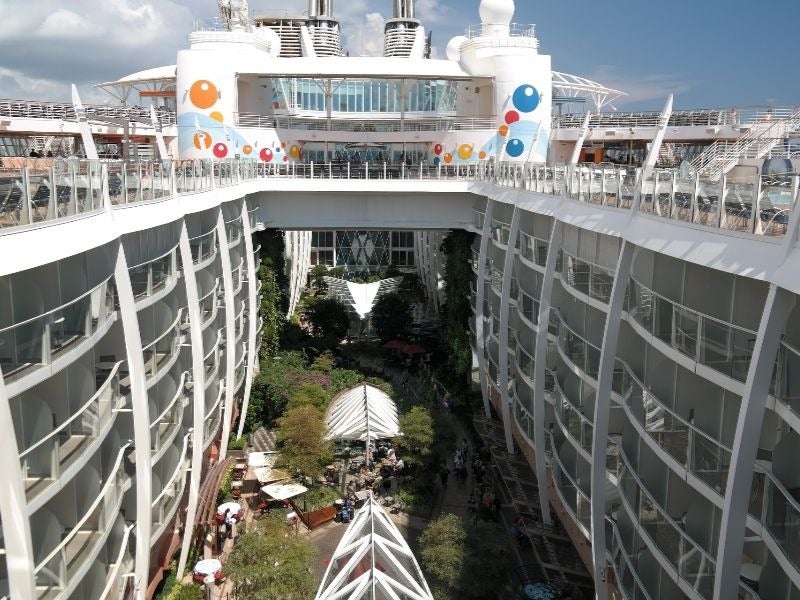
According to the Cruise Lines International Association (CLIA), 28.5 million people enjoyed cruises last year. However, many travellers still desire the comforts of home, which includes access to live TV content.
Satellite-based TV services have proven a trusted method of serving this seaborne market, offering cabins hundreds of international channels, across multiple languages with quality up to 4K. The development of innovative SAT>IP technology is set to make delivering onboard satellite TV easier and more flexible with much lower cost in terms of retrofitting existing liners.
Future Cruise: Who is behind SAT>IP and what does the technology allow users to do?
Thomas Wrede: Developed and ratified in 2012 by the SAT>IP Alliance, the technology brings together world-leading satellite operators, manufacturers, broadcasters and service providers to create a seamless multi-screen TV experience, including 4K content, without the need for a high-speed broadband connection.
SAT>IP is a standard-based and license-free technology available to all manufacturers that offers the best way for satellite TV providers to deliver live content to any screen, including PCs, smartphones, games consoles and tablets in commercial environments. Today, over 50 vendors have SAT>IP certified technologies alongside a mature system integrator ecosystem.
FC: How does SAT>IP work with the onboard infrastructures?
TW: In a traditional onboard satellite TV reception system, a DVB-S/S2 radio frequency (RF) signal is decoded and distributed via dedicated analogue coaxial cables that need to run to every cabin through a branching arrangement of multi-switchers.
Coax installations are prone to electromagnetic interferences and aggregated noise that hinders finding the source of any quality or outage problems. As such, coax installations are becoming less common over time, with ship owners gradually migrating to a pure and converged IP network that presents important advantages in term of manageability, troubleshooting and a better TCO over time.
How well do you really know your competitors?
Access the most comprehensive Company Profiles on the market, powered by GlobalData. Save hours of research. Gain competitive edge.

Thank you!
Your download email will arrive shortly
Not ready to buy yet? Download a free sample
We are confident about the unique quality of our Company Profiles. However, we want you to make the most beneficial decision for your business, so we offer a free sample that you can download by submitting the below form
By GlobalDataWith SAT>IP, satellite-delivered RF signals are converted to IP right at the point of reception in a SAT>IP server, or within the satellite antenna itself to create an IP transport layer. Once converted to IP, satellite TV can be distributed, like traditional IPTV, over any IP network. This can include wireless (Wi-Fi, 4G, 5G), wired ethernet, optical fibre, plastic fibre, coax, twisted pair (xDSL) or visible light technologies.
FC: How complex is the setup process, especially on older vessels?
TW: This focus on simplicity and reliability extends to how on-board IP networks are designed for delivering TV. For older vessels where the cost of a major refurb is difficult to justify, SAT>IP requires a less complex and expensive IP architecture. To go slightly deeper into the technology; IPTV usually relies only in IP multicast as the transport protocol.
A pure IP multicast service such as IPTV can become a hurdle to implement as complex networks on large vessels will often require multicast routing protocols. Such protocols are sometimes not supported on certain routing equipment and can present buggy implementations.
Unicast services, although less efficient, present fewer problems to integrate onto IP networks and particularly legacy ones on older ships. As SAT>IP supports both IP multicast and unicast, it is potentially the best of both worlds, offering the scalability for those vessels supporting IP multicast, and backwards compatibility on legacy networks without multicast support.
FC: How does SAT>IP improve the cruise experience for customers?
TW: SAT>IP allows modern viewing experiences to be achieved on the high seas. The importance of onboard entertainment cannot be overstated for cruise line companies which must offer differentiated experiences to compete for passengers in a rapidly growing market.
Being designed from the beginning as a bridging technology between satellite and local IP networks, SAT>IP provides a better experience with broadcast transmissions compared to IPTV. As an example, SAT>IP delivers seamless integration with the platforms’ Electronic Program Guide (EPG) and enables channel announcements within the network.
IPTV requires special display devices, typically a set-top box or a specific ‘hospitality’ TV, and usually do not provide compatibility with smart devices. Some proprietary IPTV solutions may also have restrictions on video resolution or picture quality. Instead, SAT>IP not only supports suitable, off-the-self smart TVs as viewing devices, but also presents a much better interoperability with bring-your-own-device (BYOD) scenarios where the end-user consumes content on their own smartphone or tablet.
SAT>IP can also handle all video resolutions from the lowest SD quality up to 4K and surround audio, keeping the solution scalable and combinable to meet the requirements. In fact, although some ships already operate legacy IPTV solutions, the possibility of accessing the service over standardised off-the-shelf devices brought by SAT>IP might be enough reason to upgrade these platforms.
FC: What additional opportunities could this technology provide for cruise operators?
TW: In the future, it is possible that the adoption of SAT>IP will create new service opportunities and potential revenue models. By integrating satellite with OTT to create a hybrid service, SAT>IP takes the best part of satellite delivery (high quality, guaranteed delivery) and combines it with the flexibility and personalisation of IP experiences.
For example, SAT>IP signals can be easily enriched with meta-data services such as hybrid broadcast broadband TV (HbbTV) – a modern HTML5-based interactive technology – to offer onboard services such as room service, activity booking and information delivery. Revenue opportunities include content bundles as add-ons to tickets. For example, the option to view kids’ content on an iPad, sports and films on the big TV, or TV shows on a laptop.
In summary, SAT>IP provides a clear benefit to the cruise ship sector including easy installation, modern-looking cabins with no additional boxes or RCUs plus lower installation and device costs per cabin. When added to enhanced reliability and convenient to use services for the cruise ship guests, SAT>IP offers a compelling option for live TV delivery.







